What is a verb? Learn different types of verbs in English grammar with useful verbs list and examples. The verb is a very essential type of word in any language and in English, this is no different. You must have a verb in order to create a sentence and so understanding their function is vital to being able to speak the language. In this article, we are going to be looking at what a verb is and how it is used. We will also be looking at some example sentences to further gain an understanding on what the verb is used for.
What Is A Verb?
What is a verb? In the most simple terms, a verb is a word which describes an action, often known as a ‘doing’ word. In the English language, the verb is the only kind of word which will change to show whether the past or present is being spoken about. The verb is considered to be the most vital part of any sentence, without it you would be left literally speechless.
A verb is a word or group of words that describes an action, experience or expresses a state of being.
Verbs are the main part of a sentence and one of the nine parts of speech in English.
Verb examples: Walk, is, seem, run, see, swim, stand, go, have, get, promise, invite, listen, sing, sit, …
- He speaks English
- I don’t know how to spell the word
- She studies hard
There are many different types of verbs in English grammar: irregular verb, modal verb, dynamic verb, stative verb, auxiliary verb, causative verb,…
Verb Rules
Important Verb Rules
There are many rules surrounding the use of verbs in the English language, let’s take a look at the most important ones.
- When talking in the third person, the verb requires an -es or -s form, for example, he uses the bathroom.
- If the verb and the subject have a long phrase between them, the verb has to agree with the original subject and not that of the phrase. For example, The sweets which he gave to his wife were very tasty.
- If the subject is preceded by the phrase ‘one of’, the following verb should be singular. For example, One of the children is crying.
- If two nouns are within a sentence and refer to the same thing or person, the following verb should be singular. For example, The doctor and the nurse are working in the hospital.
- If there are two nouns which are synonymous within a sentence, they should be followed with a singular verb. For example, His power and might is huge.
- Plural nouns on their own will use a plural verb, for example His shoes are too big. I However, if the plural noun is preceded by the words ‘a pair of’ then a singular verb is required. For example A pairs of shoes is quite expensive.
- If the noun is uncountable then a singular verb should always follow it, for example The poetry that he writes is very romantic.
- When a collective noun is referring to a single entity, it should use a singular verb, for example The military is very strict. However, if it is being used to refer to an individual then a plural verb should be used, for example The military are requesting new members.
Subject Verb Agreement Rules
10 subject verb agreement rules in English grammar:
- The subject and verb must agree in number. A singular subject takes a singular verb, whereas a plural subject takes a plural verb.
- The subject is separated from the verb by “with”, “as well as”, “together with”, “along with”. These words and phrases are not part of the subject. The verb agrees with the subject.
- Two subjects joined by “and” are plural.
- Two subjects joined by “or/not”, “either…or/neither…nor”, “not only…but also” take the verb that agrees with the subject closest to it.
- With collective nouns, the verb might be singular or plural (UK), depending on meaning.
- In sentences beginning with “here” or “there“, the true subject follows the verb.
- The verb is singular if the subject is a singular indefinite pronoun. The verb is plural if the subject is a plural indefinite pronoun. And, some indefinite pronouns (some, any, all, most) may be either singular or plural, depending upon their use in a sentence.
- Use a singular verb for expressions of measurement, time. money and weight when the amount is considered one unit.
- Plural form subjects with a singular meaning take a singular verb.
- Titles of single entities are always singular.
10 Subject Verb Agreement Rules in English
Verb Examples (with Different Types)
Learn examples of different types of verbs in English with useful grammar rules.
Irregular Verbs
Irregular Verb Definition
Irregular verbs are common verbs in English that do not follow the simple system of adding “d” or “ed” to the end of the word to form the past tense (the past simple and/or the past participle).
Irregular Verb Examples
- Fall – fell – fallen
- Feed – fed – fed
- Feel – felt – felt
- Fight – fought – fought
- Find – found – found
- Fly – flew – flown
- Forbid – forbade – forbidden
- Forget – forgot – forgotten
- Forgive – forgave – forgiven
- Freeze – froze – frozen
- Get – got – got
- Give – gave – given
- Go – went – gone
- Grind – ground – ground
- Grow – grew – grown
- Hang – hung – hung
- Have – had – had
- Hear – heard – heard
- Hide – hid – hidden
- Hit – hit – hit
- Hold – held – held
- Hurt – hurt – hurt
- Keep – kept – kept
- Kneel – knelt – knelt
- Know – knew – known
- Lay – laid – laid
- Lead – led – led
- Lean – leant/ leaned – leant/ leaned
- Learn – learnt/ learned – learnt/ learned
- Leave – left – left
- Lent – lent – lent
- Lie (in bed) – lay – lain
- Lie (not to tell the truth) – lied – lied
- Light – lit/ lighted – lit/ lighted
- Lose – lost – lost
- Make – made – made
- Mean – meant – meant
- Meet – met – met
- Overtake – overtook – overtaken
- Pay – paid – paid
- Put – put – put
- Read – read – read
- Ride – rode – ridden
- Ring – rang – rung
- Rise – rose – risen
- Run – ran – run
- Saw – sawed – sawn/ sawed
- Say – said – said
- See – sawed – seen
- Sell – sold – sold
- Send – sent – sent
- Set – set – set
- Sew – sewed – sewn/ sewed
- Shake – shook – shaken
- Shed – shed – shed
- Shine – shone – shone
- Shoot – shot – shot
- Show – showed – shown
- Shrink – shrank – shrunk
- Shut – shut – shut
- Sing – sang – sung
- Sink – sank – sunk
- Sit – sat – sat
- Sleep – slept – slept
- Slide – slid – slid
- Smell – smelt – smelt
- Sow – sowed – sown/ sowed
- Speak – spoke – spoken
- Spell – spelt/ spelled spelt/ spelled
- Spend – spent – spent
- Spill – spilt/ spilled – spilt/ spilled
- Spit – spat – spat
- Spread – spread – spread
- Stand – stood – stood
- Steal – stole – stolen
- Stick – stuck – stuck
- Sting – stung – stung
- Stink – stank – stunk
- Strike – struck – struck
- Swear – swore – sworn
- Sweep – swept – swept
- Swell – swelled – swollen/ swelled
- Swim – swam – swum
- Swing – swung – swung
- …
Common Irregular Verbs List in English
Modal Verbs
Modal Verb Definition
Modal verbs are a small class of auxiliary verbs used to express possibility, obligation, advice, permission, ability, …
Modal Verb Examples
- Will
- Shall
- Would
- Should
- Ought to
- Must
- Mustn’t
- May
- Might
- Can
- Could
- Have to/ Has to
- Don’t/ Doesn’t have to
Modal Verb Examples
Modal Verbs To Express Ability
Learn how to use Modals of Ability in English
- Be able to
- Can/Can’t
- Be able to
- Could/Couldn’t
- Managed to
- Be able to
- Can/can’t
Modals of Ability Image
Modals for Asking Permissions
Learn useful Modals for Asking Permissions in English
- Can
- Could
- May
- Would
Modals for Asking Permissions Image
Perfect Infinitive with Modals
The structure “have + past participle” is called a perfect infinitive.
Learn how to use perfect infinitive with modal verbs in English: must have, can’t have, should have, shouldn’t have, needn’t have, ought to have, may have, might have, could have, would have.
Perfect Infinitive with Modals Image
Dynamic Verbs
Dynamic Verb Definition
A dynamic verb is a verb that shows continued or progressive action on the part of the subject. This is the opposite of a stative verb.
Dynamic Verb Examples
- Eat
- Walk
- Learn
- Grow
- Sleep
- Talk
- Write
- Run
- Read
- Go
Stative Verbs
Stative Verb Definition
Stative verbs are verbs that express a state rather than an action. They usually relate to thoughts, emotions, relationships, senses, states of being and measurements.
Stative Verb Examples
Mental State
- Suppose
- Recognise
- Forget
- Remember
- Imagine
- Mean
- Agree
- Disagree
- Deny
- Promise
- Satisfy
- Realise
- Appear
- Astonish
Possession
- Have
- Own
- Possess
- Lack
- Consist
- Involve
Emotions
- Like
- Dislike
- Hate
- Adore
- Prefer
- Care for
- Mind
- Want
- Need
- Desire
Measure, cost, others
- Measure
- Weigh
- Owe
- Seem
- Fit
- Depend
- Matter
Auxiliary Verbs
We briefly mentioned the auxiliary verb when discussing the verb to be, however other verbs can function as auxiliary verbs and this means that they cannot create a sentence alone but requires the use of another verb and can help it to demonstrate various conditions, states or tenses. Let’s look at some examples of this.
- When I got there, she had finished the lesson.
- After he arrived home, we had eaten dinner.
Auxiliary Verb Definition
An auxiliary verb is a verb that adds functional or grammatical meaning to the clause in which it appears, such as to express tense, aspect, modality, voice, emphasis, etc. An auxiliary verb is most generally understood as a verb that “helps” another verb by adding grammatical information to it.
Auxiliary Verb Examples
- Do: I do not feel like going out tonight.
- Have: I have just received his reply.
- Be: A model railway mart will beheld on Friday.
- Will: He will not play volleyball.
Auxiliary Verb Examples
Causative Verbs
Causative Verb Definition
Causative verbs are verbs that show the reason that something happened. They do not indicate something the subject did for themselves, but something the subject got someone or something else to do for them.
Causative Verb Examples
- Have: I had the mechanic check the brakes.
- Get: I couldn’t get the engine to start.
- Make: I like him because he makes me laugh.
- Let: If you accept, please let me know.
Causative Verb Examples
Transitive Verbs
A transitive verb is one which has the ability to have a noun directly attached to it. Examples of this might be:
- kick call
- write story
- answer questions
Intransitive Verbs
This type of verb cannot have a noun directly attached to it and requires the use of a preposition in order to help it function. Examples of intransitive verbs might be:
- run to the shop
- proceed with the game
- abide by the rules.
No Action To Be
A no action to be verb means that the verb is not directly referencing an action. The verb to be can function as both an auxiliary verb as well as a main verb. When it is being used as a main verb it will join a subject to an adjective for example She is small. It might also join a subject to another noun, for example James is King.
However, when to be functions as an auxiliary verb it will form the progressive tense. An example of this would be;
- The book is read by the teacher.
- He is watching the TV.
Linking Verbs
This is a type of verb which is a “non be” verb and is used to link a subject to a noun, a phrase or an adjective. For example:
- This looks amazing.
- The food tastes beautiful.
The Different Forms of Main Verbs
When we are dealing with main verbs, there are different forms in which they can come. We are now going to take a look at each of these forms in a little more detail.
Infinitives
The infinitive form of a verb is that state in which it is originally found. In English, this is often with the word ‘to’ in front of the verb, for example to run, to see, to have, to live.
What is a To-Infinitive?
A to-infinitive is a verbal consisting of to + a verb, and it acts like a subject, direct object, subject complement, adjective, or adverb in a sentence.
We use the infinitive:
- To indicate the purpose of an action
- As subject of the sentence
- As direct object of the sentence
- As subject complement
- As an adjective
- As an adverb
- After adjective
- After object that is noun or pronoun referring to a person
- Used with question word
Verbs Followed by Infinitives
List of commonly used Verbs Followed by Infinitives
- Attempt
- Ask
- Arrange
- Beg
- Begin
- Care
- Choose
- Claim
- Consent
- Continue
- Dare
- Decide
- Demand
- Deserve
- Dislike
- Expect
- Fail
- Forget
- Get
- Hesitate
- Hope
- Hurry
- Intend
- Learn
- Like
- Love
- Manage
- Mean
- Neglect
- Need
- Offer
- Plan
- Prefer
- Prepare
- Pretend
- Proceed
- Promise
- Propose
- Refuse
- Remember
- Seem
- Start
- Stop
- Struggle
- Swear
- Threaten
- Try
Zero Infinitive
We use the Zero Infinitive when:
- After modal auxiliary verbs
- After the object after certain verbs, such as hear, see, make, let
- After verbal idioms would rather and had better
- Used with WHY
Zero Infinitive in English
Gerunds
What is a Gerund?
Gerunds are verbals that function as nouns and have an –ing ending.
The gerund form of verbs is used as follows:
- Used as subject of a sentence
- Used as direct object of a sentence
- Used as a subject complement
- Used as an object of a preposition
- Used after certain expressions
How to Use Gerunds in English
Verbs Followed by Gerunds
Useful list of Verbs Followed by Gerunds in English.
- Admit
- Advise
- Anticipate
- Acknowledge
- Appreciate
- Avoid
- Bear
- Begin
- Complete
- Consider
- Defer
- Delay
- Deny
- Discuss
- Dislike
- Enjoy
- Entail
- Finish
- Forget
- Hate
- Intend
- Involve
- Justify
- Keep
- Like
- Love
- Mention
- Mind
- Miss
- Postpone
- Practice
- Prefer
- Quit
- Recall
- Recollect
- Recommend
- Regret
- Resent
- Resist
- Risk
- Sanction
- Start
- Stop
- Suggest
- Tolerate
- Try
List of Common Verbs Followed by Gerunds
Present and Past Participles
What is a Participle?
A participle is a verbal that is used as an adjective and most often ends in -ing or -ed. They function as adjectives, thus participles modify nouns or pronouns.
Types of Participles
There are two participles in the English language: the present and past participle.
This is a very simple concept as to create the present participle one must simply add the letters -ing to the verb stem. This shows that something is happening right now. For example I am leaving the house or The cat is lying on the rug.
Similarly to the present participle, the past participle shows time, in this case that something has already happened-or has happened in the past. In order to create the past participle, one must add the letters -ed to the verb stem. For example the sentence I decide what happens would become I decided what happens.
Despite the addition of -ed being the regular form of past participle, there are some irregular verbs which do not follow this pattern. Some examples of this are as follows:
- to show – shown
- to see – seen
- to built – built
- to feel – felt
The Present Participle Image
The Past Participle Image
Finite and Non-finite Verbs
Another word for the finite form is the conjugated form. This happens when the verb is being used within a sentence. By conjugating the verb you are allowing it to demonstrate tense, number, mood and person. An example of this might be the sentence ‘he won the tournament.’ The conjugated verb here shows us that this is a past tense sentence in the third person singular. Learn Finite and Non-Finite Verb Forms in English.
Finite Verb Forms
A finite verb is controlled by the number of the subject. If the subject is singular, the verb is singular. If the subject is plural, the verb is plural.
Examples:
- They are studying reproduction in shellfish.
- I sing with the university chorus.
Non-finite Verb Forms
A non-finite verb is not controlled by the number, person and tense of the subject.
Examples:
- I don’ t want to go home in the dark.
- She put a blanket over the sleeping child.
Finite and Non-finite Verb Forms
List of Verbs: Examples & Images
Learn an extensive list of commonly used verbs in English.
- Do: I don’t know.
- Doubt: I doubt if it’ll snow.
- Drag: I had to drag him out of bed.
- Drive: He drives a truck.
- Drop: I dropped my sandwich.
- Dry: Raisins are dried grapes.
- Earn: He earns three times more than me.
- Eat: You can’t eat your cake and have it.
- Encourage: John encouraged Mary to learn how to speak French.
- Engage: We used to be engaged.
- Enter: He entered the room.
- Establish: The school was established in 1650.
- Examine: The doctor examined the patients.
- Experiment: They’re experimenting with a new car.
- Explore: He explored the Amazon jungle.
- Extend: We extended a hearty welcome to them.
- Fly: Tom wishes he could fly.
- Fold: Tom and Mary folded up the flag.
- Follow: We must follow the rules of the game.
- Forbid: I forbid you to smoke.
- Fry: She fried fish in salad oil.
- Generate: This machine generates electricity.
- Get: We’ve got to get the economy under control or it will literally eat us up.
- Give: The waiter gives me the menu.
- Grow: Apples grow on trees.
- Hang: Don’t you hang up on me.
- Happen: You made it happen.
- Hesitate: I hesitate to spend so much money on clothes.
- Hide: I’m hiding from Tim.
- Hug: I really need a hug.
- Hurry: It had to hurry to find a home because I was already on to something else.
- Hurt: I hurt my elbow.
- Identify: She identified him as the murderer.
- Improve: I need to improve my French.
- Include: Tom’s lunch includes a sandwich and an apple.
- Incorporate: Her business was incorporated.
- Indicate: The arrow indicates the way to go.
- Involve: This procedure involves testing each sample twice.
- Iron: I iron my clothes almost every day.
- Jog: I make it a rule to jog every morning.
- Jump: Can you jump over the river?
- Kiss: Did you kiss anybody?
- Kneel: Do not run, stand, kneel or spin in the slide.
- Laugh: Tom is laughing.
- Lay: He laid on his back.
- Learn: Children learn to creep ere they can go.
- Leave: Leave me alone!
- Lift: He couldn’t lift the table and no more could I.
- …
What is a verb? Learn verb definition and different types of verbs in English
Conclusion
The verb is an integral part of the English language and there are many rules surrounding its use. In this article, we have learnt the various types of verbs as well as how to use the them by following some simple grammatical rules.





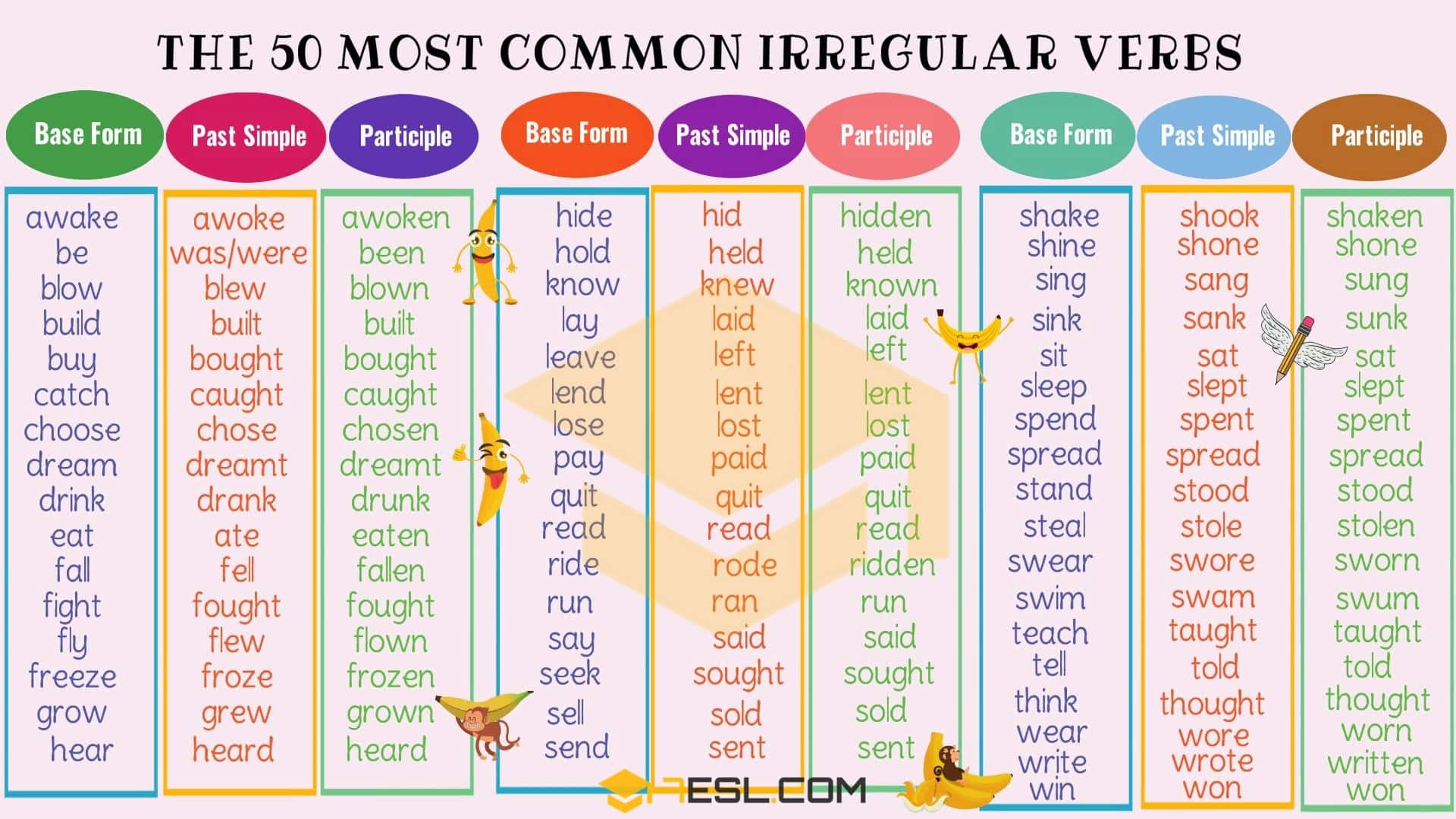




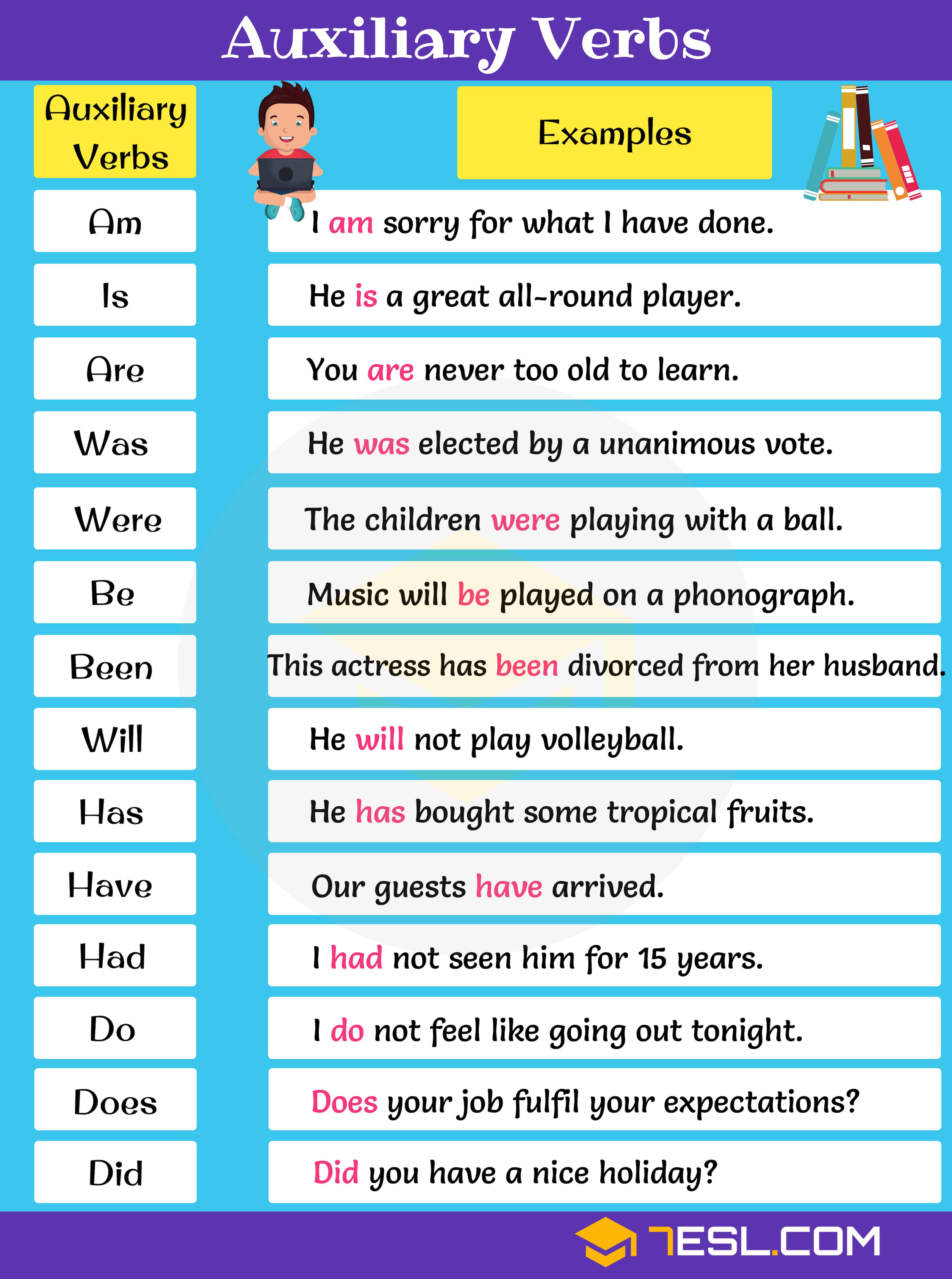

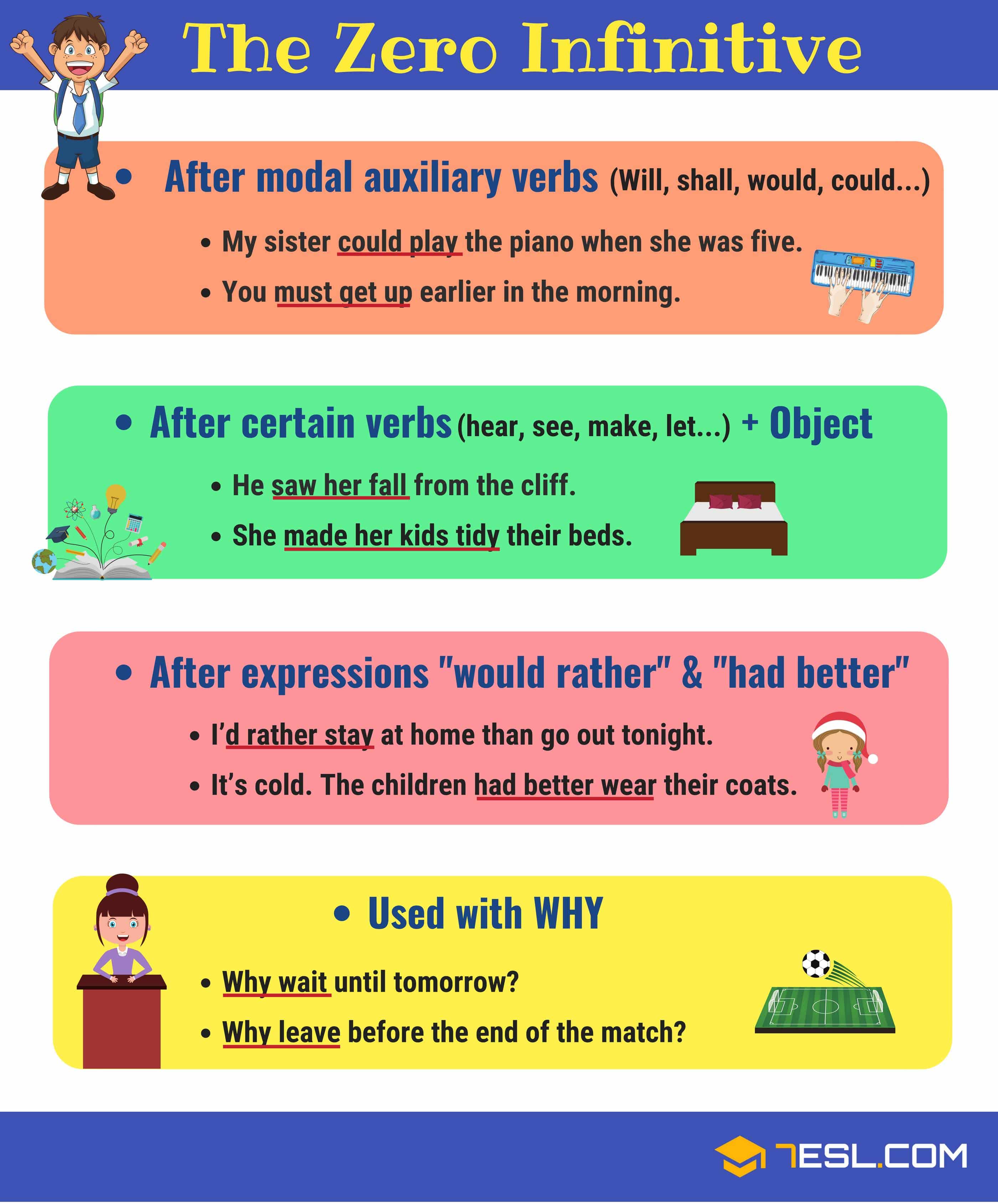



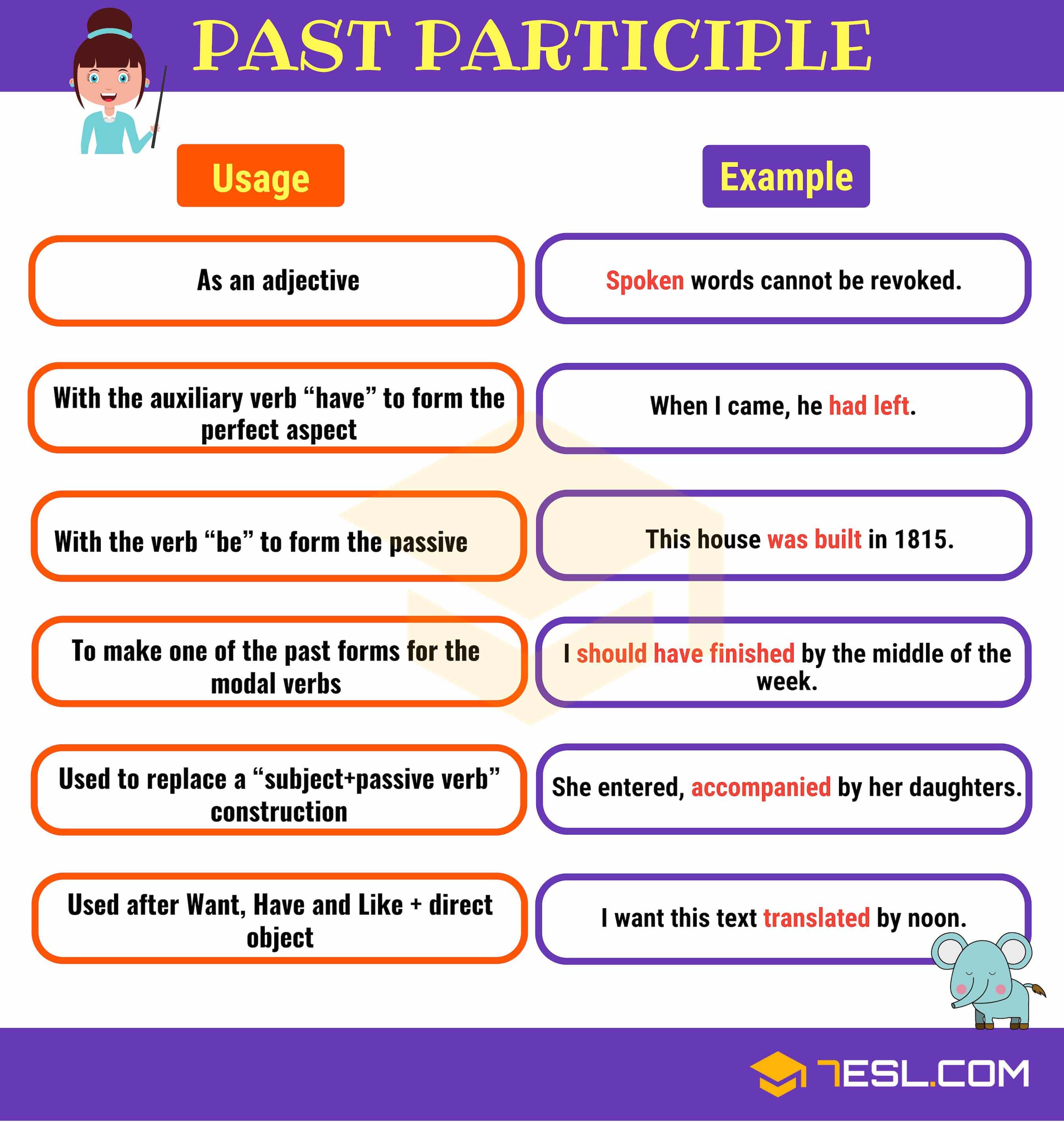
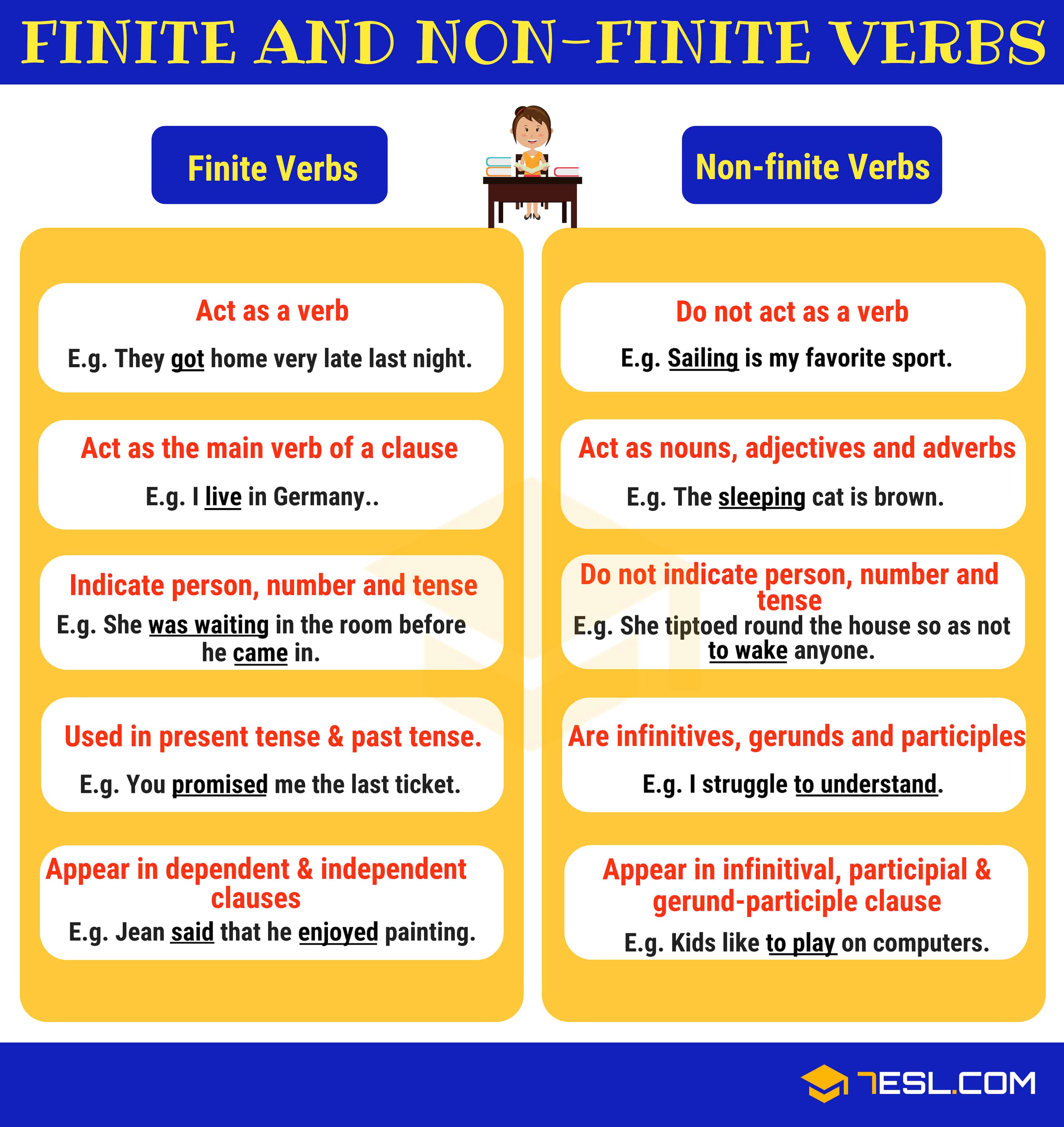



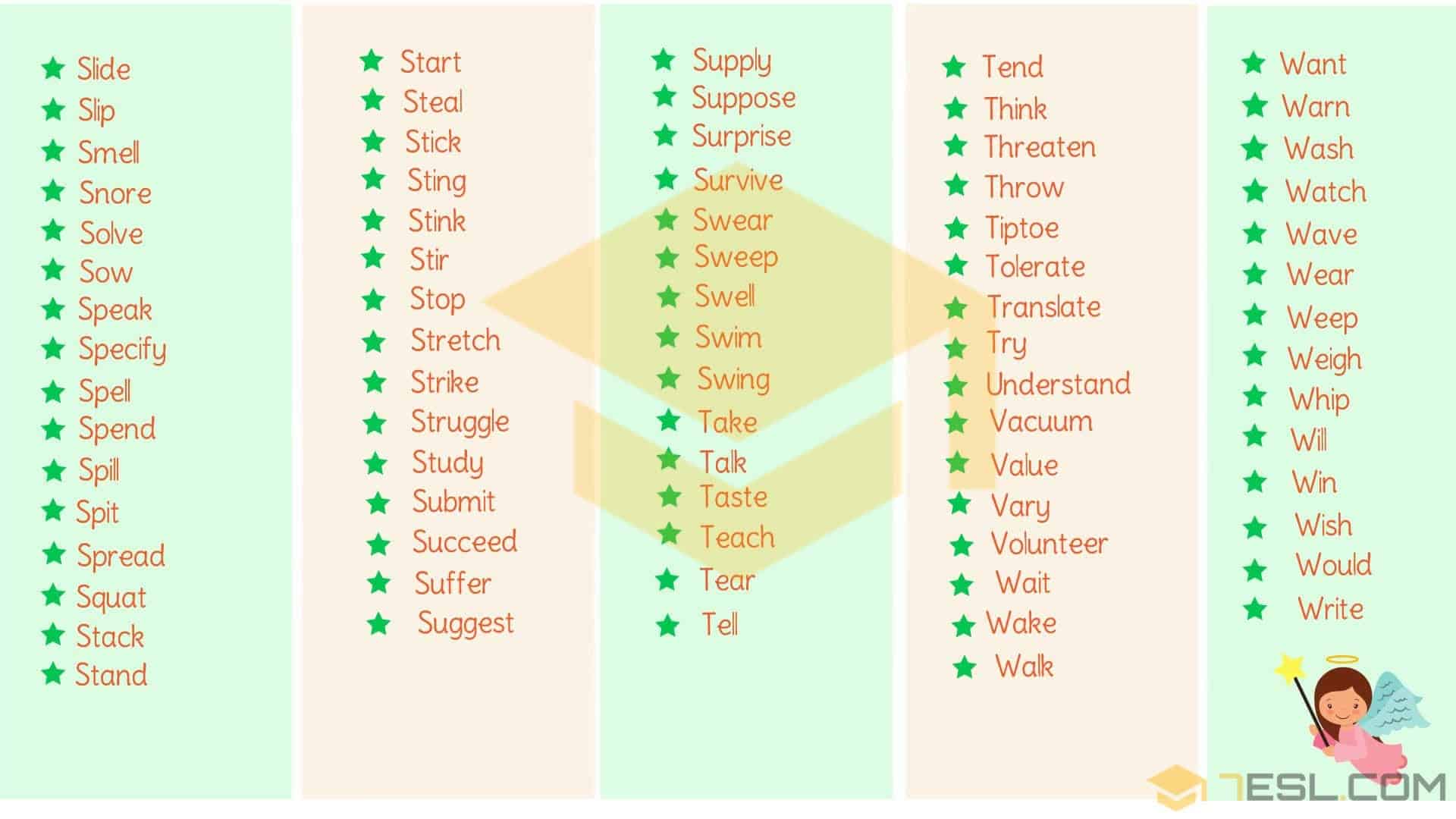



0 Comments